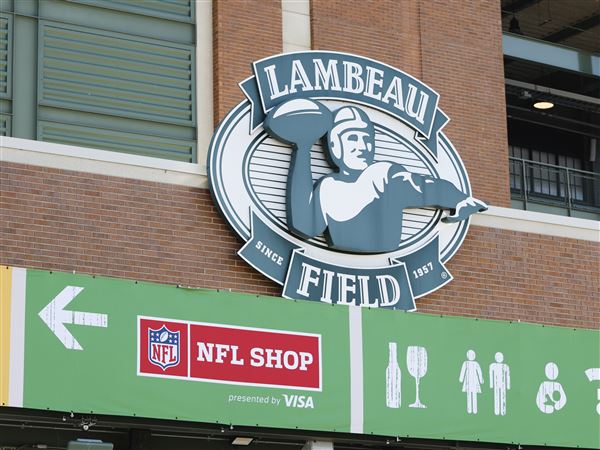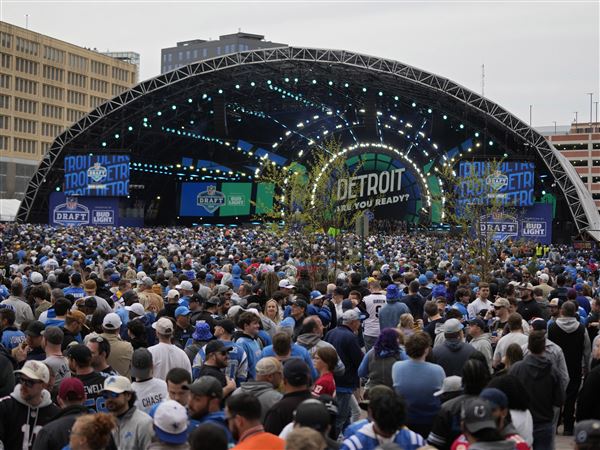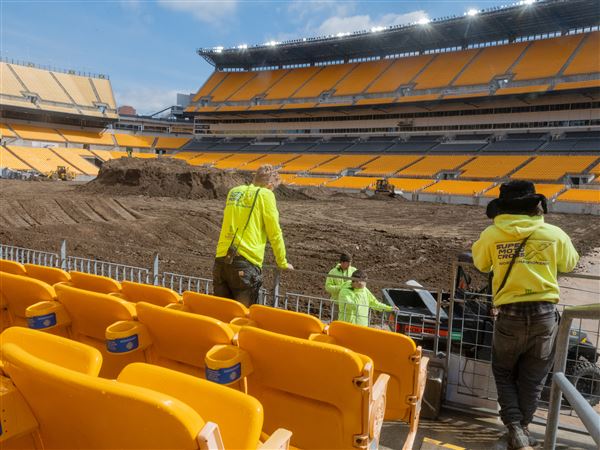In an exhaustive effort, preservation architect Terry A. Necciai is working to have Charleroi designated as a national historic district.
Paperwork and research for the project could take another year to complete the task begun in 1981 when the state determined that Charleroi would qualify as a National Register Historic District.
The state Historical and Museum Commission must review Necciai's inventory and descriptions of as many as 1,000 buildings, among other documentation, before deciding to include it on the National Register.
The only outstanding issues are the district's exact historical significance, its size and boundaries.
When completed, the district would be one of the state's largest historic districts. It features dozens of blocks of repeated small houses and stores characteristic of the 1890s, but concentrated in a way more typical of company-built towns.
Interspersed among the houses are larger buildings designed by local architects, with others designed by architects from other cities, including New York.
Charleroi was created in tandem with a large glass factory. Although the company that built the factory also built some houses, it was a separate land company, owned by the same founders, who laid out the remainder of the town and promoted the sale of real estate.
As it turned out, Charleroi's founders were as interested in selling real estate as they were in making glass.
The company used the idea it was building an American version of the Belgian glass, steel and coal city of Charleroi (pronounced Shalla-wah), as a promotional gimmick to help sell the land.
"Pittsburghers were in awe of Belgian technology at the time because some very talented engineers from the Charleroi district had immigrated and found jobs in Pittsburgh industrial plants prior to 1890," Necciai said.
But Necciai downplays the notion that people who built the plant and the community traveled to Belgium to recruit glass-making experts to work in the Mon Valley plant.
Advocating diversification, company founders invited other Pittsburgh companies to relocate in Charleroi.
While early buildings in Charleroi reflect the upstart glass industry, later buildings reflected the borough's role as a wholesale and retail center for the mid-Mon Valley.
Necciai to the rescue
The project came under consideration in 1981 when the state commission named the borough as a candidate for designation based on its character, consistency and age of buildings. The historical significance, however, had not been determined.
When Necciai served as Charleroi's Main Street manager from 1987 to 1990, he promoted the idea of placing the district on the National Register. But money was not available to prepare documents, so the project lay dormant another 14 years until seven months ago, when the Charleroi Area Historical Society hired the Monongahela native to complete the nomination.
Necciai works as a preservation architect with John Milner Associates Inc., of Alexandria, Va., one of the premier preservation architectural firms in the nation.
Necciai is preparing documents that detail each building in the proposed district. He is setting district boundaries according to strict state Historical and Museum Commission standards. The commission has authority to assign Pennsylvania sites and districts to the National Register of Historic Places.
Although several important buildings have been torn down since he served as Main Street manager, about 80 percent of the buildings standing in 1907 remain in place. Since the 1950s, historic buildings have undergone alteration, but the original designs are apparent and could be restored, Necciai said.
A future based on history
Charleroi's designation as one of the state's largest historic districts would not only boost borough morale, but encourage tourism, historical society secretary Nikki Sheppick said.
"I think it lends something to Washington County as a destination point and will facilitate the Mon Valley as a tourism spot," she said.
Community history revolves around the Monongahela River, glass, retail and the Whiskey Rebellion.
"I look for diversifying into river tourism, and once the designation is official, we'll be eligible for funding," she said, noting tax credits and other federal money available to restore historic properties. "We have something unique to offer, as do all towns along the river. The whole valley can play a factor in regional tourism, and this could help to get us going.
"We're just trying to do our part," Sheppick said.
Plate glass and natural gas
In 1810, Pittsburgh was a world leader in glass production and was the first glass center to use coal rather than wood as fuel. But heading into the 1880s, local glass plants still used the craft of glass blowing, rather than casting, which is necessary to make plate glass. Plate glass had to be imported from France and Belgium.
But in 1881, John Ford built the first Pittsburgh Plate Glass plant in Tarentum, which used engineering secrets, some from Belgian immigrants, to make plate glass. Ford's plant, the first of many he built in the region, created a glass revolution in the United States.
One key requirement to making plate glass was natural gas, which is necessary to produce clearer plate glass.
Glass plants began cropping up regionwide, and lawyer M.J. Alexander worked to develop towns around these plants. He helped to create Jeannette, then led a group of investors to build a glass plant in the mid-Mon Valley.
Surveyors divided property around the glass plant into lots, and Alexander promoted and sold it. The Charleroi Land Co. made money on the real estate venture as people bought lots and built the town. Necciai said it was the most rapidly developed community created in the Pittsburgh region.
The problem was, the Charleroi glass plant had to compete with Ford's plants.
"The [Charleroi Plate] glass factory never was successful," Necciai said. "But there was a time in 1895 when Charleroi could have become a one-company town."
After an economic slump in the mid-1890s, the company persisted but no longer was necessary to town survival. Instead, Necciai said, Charleroi business owners organized and transformed the town into a major Mon Valley retail and wholesale hub.
In 1893, a second glass plant, Macbeth Glass, opened in Charleroi to make optical, lighting and pharmaceutical glass. It became the world leader in producing oil-lamp chimneys.
The advent of the light bulb reduced demand for oil lamps. Eventually, the plant made streetlight shades, dishes, glass blocks and picture tubes, along with Pyrex, a new type of glass that became the centerpiece of Corning's success when it merged with Macbeth-Evans.
But Necciai said he found no evidence Charleroi officials traveled to Belgium to recruit workers. Town founders did attempt to pattern the new town after its Belgian namesake, a city of the same size and industrial importance as Pittsburgh.
Almost by coincidence, Belgian glass blowers fleeing economic depression in Europe, flocked to Charleroi, followed by waves of glass workers from other countries.
But the main Charleroi plant, the immense factory next to Macbeth-Evans, could not overcome competition from Ford's PPG plants. The plant limped along until about 1930, when PPG bought the plant then shut it down a few years later, Necciai said.
Company-town character
The key factor in Charleroi architecture is that lots are only 22 feet wide and 100 feet deep, creating a tight grid of buildings and houses.
For that reason, most houses in Charleroi are small, frame structures with two bedrooms. Ten percent to 15 percent are Queen Anne structures built on two lots that pale in comparison with Queen Anne architecture in East Washington.
Another unique aspect of Charleroi is the way houses were built on benches cut into the steep hillside. Necciai said it was one of the steepest sites ever chosen as a town location.
Many larger masonry buildings were built in Charleroi in the 1920s. Important buildings include the Coyle Theater, built in 1890; the Christ Lutheran Church, built in 1907 from locally quarried stone; and the First National Bank building, designed by William Lee Stoddard, the architect who designed The George Washington Hotel in Washington.
"Charleroi became the typical town by atypical means," Necciai said, noting its company-town character without one-company dominance. "The same repeated forms that make it resemble a company town also made it look and work like a mall with a lot packed in a small area."
While the town didn't break down into distinct neighborhoods, every block had about 25 houses, a tobacconist, a grocery store and a confectionery, and each block of businesses had a nickelodeon, Necciai said.
"People from Charleroi never went out of town for anything because they could shop, socialize and find entertainment in town."
The boundary of the historic district, he said, could involve half of the borough's 2,500 buildings. The district could balloon by another 1,000 buildings, but Necciai does not want that to happen. It would add to his workload.
Another important detail about Charleroi, he said, is that not much was razed during the "Urban Renewal" era. "Very little has changed," he said. "There is a lot of stuff that reflects history, and it's still intact."
First Published: February 8, 2004, 5:00 a.m.














